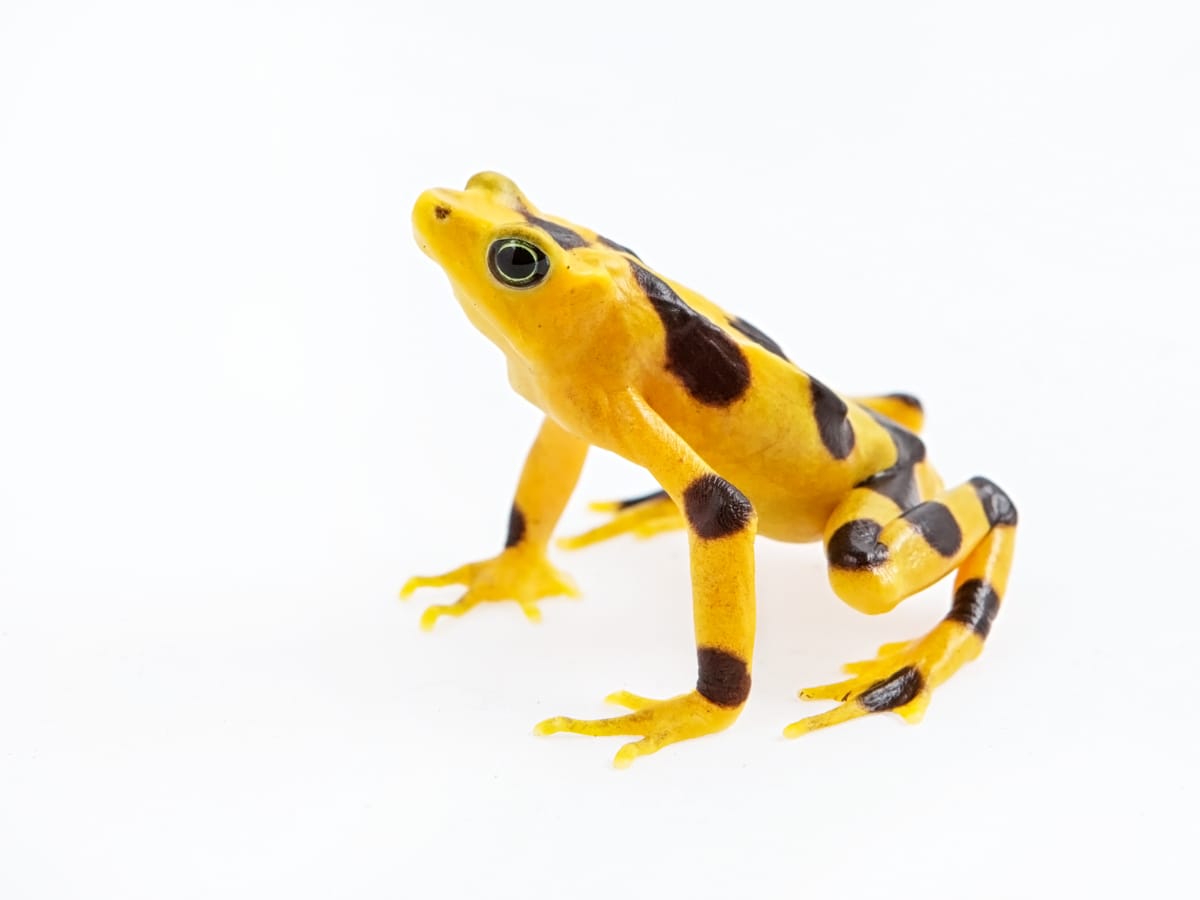Erin Lundy hasn’t always loved frogs. The Hawaiʻi-born biologist and animal care expert had more of a soft spot for marine mammals and in 2018 began working with otters and seals at the Aquarium of the Pacific in Long Beach, California. “They’re very cute, charismatic, and smart,” Lundy told me. Frogs may be cute, she added, but they’re not known for their smarts.
A couple years into her work in Long Beach, the aquarium needed help with amphibian conservation. A coworker asked if Lundy liked frogs. She replied: “Yeah, enough.”
Against all odds, she came around on amphibians. At first glance, a palm-sized tattoo of an otter inside Lundy’s forearm backs up her professed love of mammals. But there’s a surprise in the tattooed otter’s grasp: a tiny, colorful mountain yellow-legged frog. “It turns out I really like frogs,” she said.
Lundy became captivated by how in tune frogs are with their habitat. Amphibians have porous, permeable skin that sensitizes them to all the chemicals and conditions of their environment. “They like stability — they don't like super hot, super cold,” Lundy said. “They’re incredible indicator species of what the health of our environment actually looks like.”
The mountain yellow-legged frog tattooed on her arm is a perfect example. One hundred years ago, you could hardly take a step along California’s alpine lakes without noticing mountain yellow-legged frogs. Plop. Plop plop. Plop. The platonic ideal of a frog. Field biologists Joseph Grinnell and Tracey Storer wrote at the time about their numbers — “the commonest amphibian in most parts of the Yosemite section” — and the skittishness that sent them plopping into the water. By the 1990s, numbers collapsed. A 1996 field survey retraced Grinnell and Storer’s steps, and reported declines of several species. The researchers blamed trout.
“They’re incredible indicator species of what the health of our environment actually looks like.”
Californians had introduced trout to alpine lakes to support recreational fishing throughout the 20th century; Yosemite’s park rangers would stock one million per year, according to a 1940 guidebook. The problem is, some lineages of mountain yellow-legged frogs had never seen a predator. In the absence of that kind of pressure, the frogs spent longer in their vulnerable tadpole phase, with some taking as long as five years to metamorphose into adult frogs. “If you spend five years in the water as a tadpole, you become this big, juicy snack for trout,” Lundy told me. So trout did what trout do.
But, scientists would soon realize, it wasn’t just the trout. While environmental managers recognized the trout-frog problem, populations never returned to their previous heights. By the 2000s, researchers understood that a deadly fungus, Batrachochytrium dendrobatidis (or Bd), was partly responsible — not just in California’s Sierra Nevada mountains, but worldwide.
Chytrid fungi are responsible for the decline of at least 501 amphibian species. That’s 6.5 percent of all amphibians. Around 90 species have gone extinct already. In Panama alone, at least 52 species are down to 10 percent of their recent populations.
These numbers mean that Bd has tanked biodiversity more than any pathogen ever on record. Not avian malaria. Not Dutch elm disease. Frog fungus. Let that sink in.
“Not enough people are talking about it. I don't really know why,” Lundy said. In 2020, when California’s wildfires charred about 4.3 million acres, wildlife agencies rescued mountain yellow-legged frogs and their tadpoles from local mountains to raise them in captivity, in hopes of rewilding them in safe areas. (Lundy’s aquarium cares for some of these frogs as well as Panamanian golden frogs, which are functionally extinct thanks to the fungus.)




